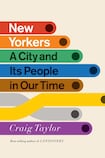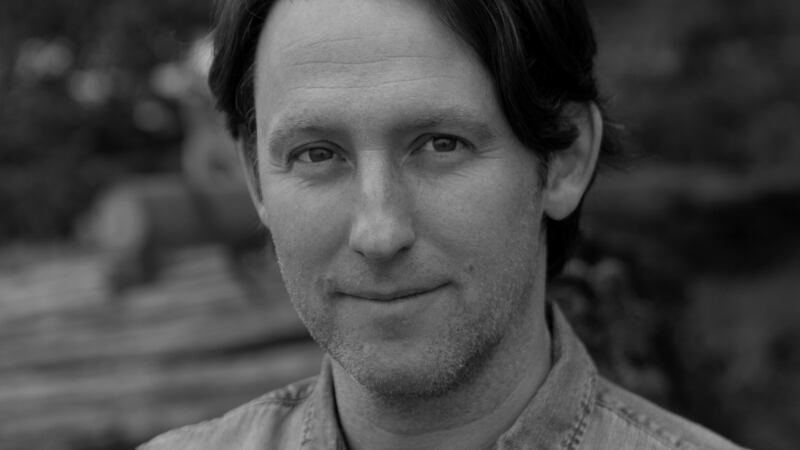
“Heaven looks like the South Bronx,” an interviewee tells Craig Taylor near the end of New Yorkers. The observation is made by a troubled man describing his leap from the roof of a building. On hitting the ground, believing he was dead, he looked up and saw the same South Bronx he had assumed that he was leaving forever: “I saw angels walking in the store and buying groceries.”
Taylor’s intimate, loving and lyrical oral history of New York doesn’t shy away from the darkness and despair of city life. He’s more interested in the pavement than the penthouse, more concerned with the people who keep the city running than with the super rich. (“In New York, the people are the texture,” an ex-cabbie tells him.) It’s a book that admires the city’s relentless energy while acknowledging that such relentlessness can wear you down. (“You get a lot of grinding,” a dentist says of New Yorkers’ teeth.)
“In New York, they keep on going,” a singer who regularly performs My Way in nursing homes tells Taylor. Such indefatigability is partly fuelled by fear: to give up is too much of a risk. “You miss one step and it’s over […]Skip a couple of months of rent and you’ll go to court, you’ll never get a lease again,” the owner of a dog walking business says. The city’s “a nonstop hustle”, according to a recent arrival. What about relaxation? “Rest is a commodity,” says a homeless man who spends his days recycling discarded bottles and cans.
New York is becoming a playground for the rich, Taylor is told many times. The employees of the fabulously wealthy provide deeply sardonic, gimlet-eyed observations of their bosses. One says that, urged by his employer, he phoned Nasa to find out whether the material used for the heat-proof tiles on the outside of spaceships might be suitable for the kitchen countertops of his boss’s apartment. A nanny observes of her prematurely jaded charges: “If you are nine and cavalier about having your own private jet, nothing is ever going to be exciting to you.”
Oral history is polyphonic, and it can be easy to overlook the role of the author. Often, especially if the author is doing their job well, it seems as if they're not there at all
The voraciousness of the real estate market is nowhere more visible than in Manhattan. Taylor talks to Steve Rosenthal, owner of The Magic Shop, the studio in SoHo in which David Bowie recorded his final two albums. The studio is gone; it closed in 2016, having been there for 28 years. “We were urban pioneers,” Rosenthal says. “You create something, a place where people can flower in their art and music. And then you just get kicked out.” Now, the tourists “are wandering around looking for history and it doesn’t exist anymore. So they just shop.”
Oral history is polyphonic, and it can be easy to overlook the role of the author. (Taylor’s preceding book, the bestselling Londoners, published in 2011, was an oral history of the British capital.) Often, especially if the author is doing their job well, it seems as if they’re not there at all, and that the reader is privy to the unmediated presence of the human voice. There’s a certain magic to it, and here it’s done brilliantly. The voices seem to jump from the page, as alive as the city itself.
There are certain points at which Taylor’s artistry reveals itself explicitly. There’s a more traditionally essayistic thread – in the vein of Joseph Mitchell’s writings about the city – in which he establishes a friendship with a homeless Vietnam veteran, Joe, who he met at a soup kitchen. Joe is sceptical about the city, preferring his memories of his hometown of Pittsburgh; Taylor tries to convince him otherwise: “Over the course of our Sundays together, I’d told Joe what I loved about this place; I pleaded New York’s case. I wanted him to see what I saw.”

He approaches a section about 9/11 obliquely, preceding it with a scene at the Queens Museum’s Panorama of the City of New York: a scale model that still includes the Twin Towers. Taylor, wearing protective cloth booties, steps across the miniaturised landscape with the curator, who notes that “one person on our staff once knocked over the Statue of Liberty”.
The first voice aside from Taylor’s that we hear at the beginning of the book is a blind jazz singer, Frank Senior, who says that he can tell the time of day by the sounds he hears: the horns of cars during rush hour, the voices of children playing in the park. He talks of the city’s smells: gas leaking from buildings, or how, in a city whose inhabitants are habitually slathered in cologne, perfume or sunscreen, a woman who didn’t wear any scent “was almost like a ghost”.
It feels as if, by beginning in this way, Taylor is suggesting that the reader pay close attention to the sensory descriptions rendered by his interviewees. A campaigner recalls the sonic experience of a protest, the sound of chants echoing around the buildings and “ringing the canyons of Manhattan”. An emergency services dispatcher remembers the sounds she heard down the phone line as the World Trade Center collapsed. “I heard it all”, she says: “buildings falling”, “people screaming”, “bodies hitting the pavement” and “officers begging for their lives”.
Late in the book, one of Taylor's guides to Rockaway, a voluble personal injury lawyer called Dan Bauso, is diagnosed with Covid-19 and taken to hospital
Taylor isn’t afraid to address the tragedies of the past two decades, but he invariably does so with an eye on the everyday, and therefore extraordinary, moments of humanity, kindness and love amidst disaster. A policeman searching for his missing colleague in the rubble of the Twin Towers sees a distressed sniffer dog, there to find body parts, that’s overwhelmed by the scale of its task. He hugs and kisses it to calm it down. “That dog. That was the defining moment of Ground Zero for me”, the policeman says.
Travelling beyond Manhattan, Taylor spends time around the city’s outer boroughs and hears several accounts of Hurricane Sandy: the flooding that engulfed Rockaway in Queens – an apocalyptic vision of chin-high water levels and houses on fire – and the unlikely arrival of a peloton of 50 hipsters on bikes coming across the bridge from Brooklyn to serve soup to grateful if bewildered locals. For months after the catastrophe, one interviewee says, you could see family photos, swept from houses by the floodwater, lying on the street or stuck in bushes.
Late in the book, one of Taylor’s guides to Rockaway, a voluble personal injury lawyer called Dan Bauso, is diagnosed with Covid-19 and taken to hospital. His oxygen levels are low, he’s overweight: it looks bad. Other patients are dying.
Bauso places a chair in front of him and, he says, “started talking to the virus”, as if it were sitting there. He curses it, telling the disease – and reminding himself – of what makes life worthwhile. He stays up all night: raging, fighting.
Dan Bauso survives.
“I told it about New York”, he says.












